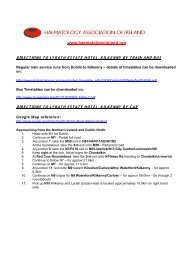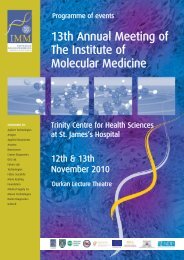Guidelines on Diagnosis and Treatment of Malignant Lymphomas
Guidelines on Diagnosis and Treatment of Malignant Lymphomas
Guidelines on Diagnosis and Treatment of Malignant Lymphomas
Create successful ePaper yourself
Turn your PDF publications into a flip-book with our unique Google optimized e-Paper software.
<strong>Treatment</strong><br />
St<strong>and</strong>ard chemotherapy for DLBCL with 6-8 cycles <strong>of</strong> R-CHOP<br />
can be used but is traditi<strong>on</strong>ally followed by involved field radiati<strong>on</strong><br />
to the mediastinum. Recent experience with DA-R-EPOCH <strong>and</strong><br />
no radiotherapy is associated with an OS <strong>of</strong> 78% <strong>and</strong> EFS <strong>of</strong><br />
67%, which may be preferably as it avoids the need to irradiate<br />
breast tissue in women <strong>and</strong> the myocardium in both sexes. If a<br />
sub-optimal resp<strong>on</strong>se is obtained from chemotherapy, the<br />
decisi<strong>on</strong> to use radiotherapy versus peripheral blood stem cell<br />
transplantati<strong>on</strong> must be made with care, as the mortality risk <strong>of</strong><br />
transplant following radiotherapy is substantial.<br />
Resp<strong>on</strong>se Evaluati<strong>on</strong> <strong>and</strong> Follow up<br />
As outlined for DLBCL. PET scanning is recommended at the end<br />
<strong>of</strong> treatment evaluati<strong>on</strong>.<br />
36
















